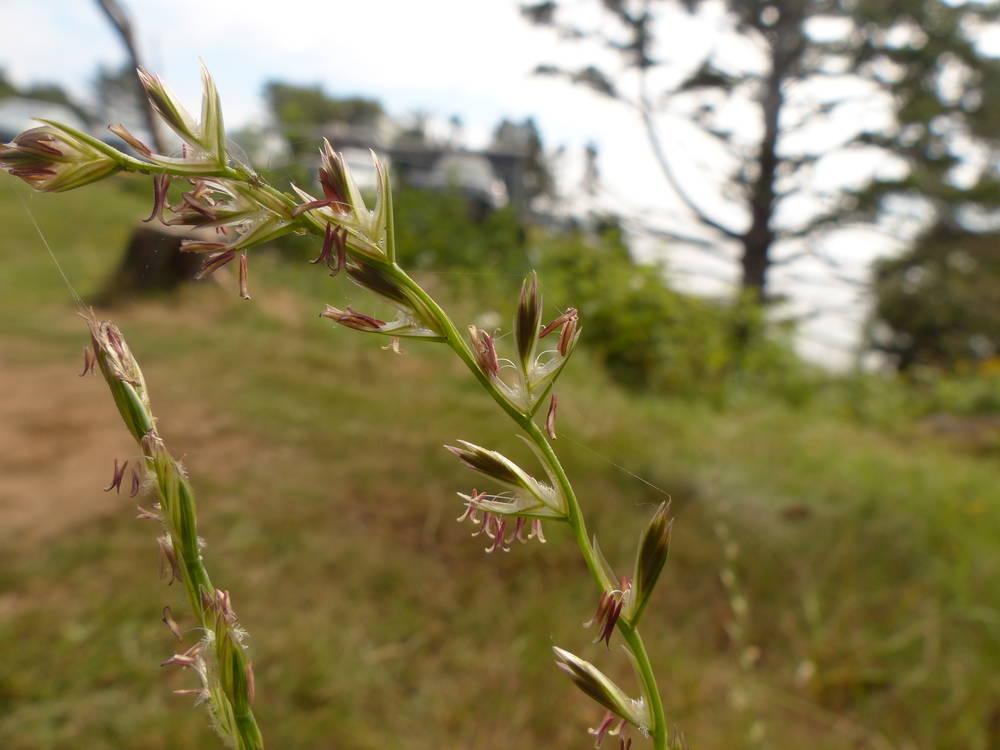Lolium perenne
Poaceae tribe Poeae
perennial ryegrass
sheaths open;
blades usually 10–30 cm × (1)2–4(6) mm, folded in the bud.
spikes, 3–30 × 0.5–1.2 cm, 5–37 spikelets; main axis 0.5–2.5 mm thick at the nodes, often flexuous.
5–22 × 1–7 mm; (2)5– 9(10) florets.
3.5–15 mm, 50–75% as long as the spikelet, rarely slightly exceeding it, membranous to somewhat hard.
3–5.5 × 0.7–1.5 mm, 3 or more times longer than wide.
3.5–9 × 0.8–2 mm; awnless or awned;
lemma awns 0–8 mm, attached 0.2–0.7 mm below the lemma tip.
2–4.2 mm.
=14.
Lolium perenne
Poaceae tribe Poeae
Disturbed open areas, meadows, roadsides. 0–1300m. Casc, Col, CR, Est, Lava, Sisk, WV. CA, ID, NV, WA; throughout North America; temperate regions worldwide. Exotic.
Typical L. perenne is perennial with remnants of last year’s leaves at the base, few florets, and awnless or short-awned lemmas. Typical L. multiflorum is annual with many florets per spikelet and awned lemmas. The two species hybridize and intergrade. Plants that combine traits of both species can be called L. × hybridum. Alternatively, the closely related L. perenne and L. multiflorum might be treated as subspecies within L. perenne.
Barbara Wilson, Richard Brainerd, Nick Otting
- Local floras:
BC,
CA,
OR,
WA
- Local Web sites:
CalFlora,
CalPhotos,
Flora NW,
PNW Herbaria
WildflowerSearch
iNaturalist (observations)
USDA Plants Database
- LBJ Wildflower Center
- SEINet
- Plants of the World Online
- Encyclopedia of Life
- Wikipedia
- Google Image Search



